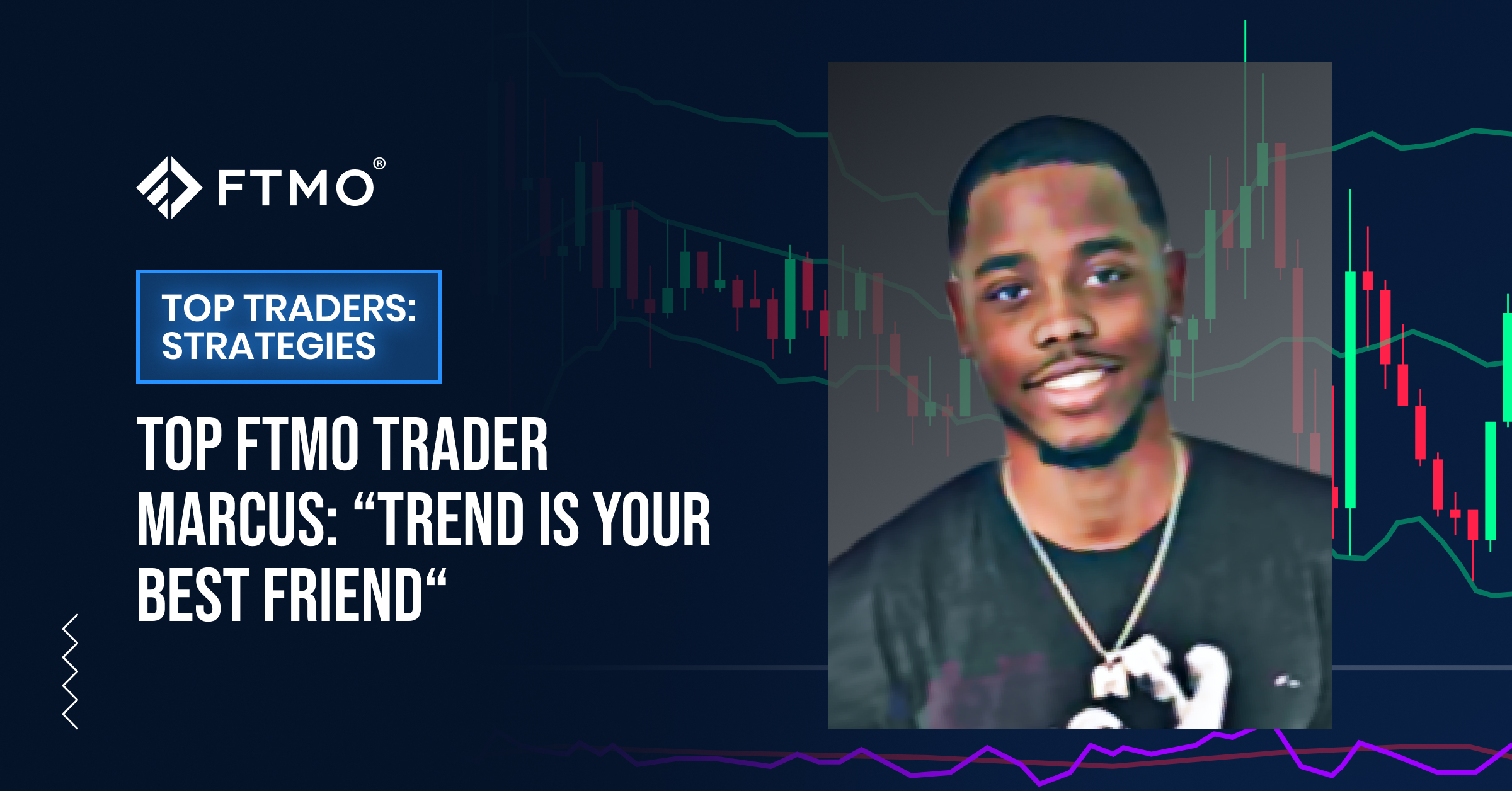
TOP FTMO Trader Marcus: “Trend is your best friend“
In the next part of our series on successful FTMO Traders who have made impressive profits or are able to achieve consistent results, we will have a look at trader Marcus.
Like most traders, Marcus got into trading through YouTube videos that caught his attention. After studying about trading practically every day and passing mentoring courses, he got into trading. And, like most traders, he made the mistake of starting to trade on a real account only after a few days on the demo.
Inconsistent beginnings
In fact, he had virtually no idea how the markets worked or what technical analysis was. Like most newcomers, he managed to wipe out several accounts. The upside in this case, he says, was that he got to experience what it was like to trade with the feeling that it was really about money, which was great training for him in terms of psychology.
In his trading, he mainly uses support and resistance levels, psychological levels, trend lines and Fibonacci levels. Interestingly, although gold (XAUUSD) is not one of his favourite instruments, in the account discussed in the interview on our YouTube channel, gold was his most successful instrument. But as Marcus himself points out, it's more that when there's a good signal on one of the instruments he follows, he goes for it.
He doesn't like very volatile markets and prefers to look for opportunities that offer stronger trends. "Trend is your best friend" is his favourite motto. His favourite instrument is the AUDUSD currency pair, and he also trades the GBPUSD in addition to gold.
In addition to technique, he also uses fundamentals to some extent. At the beginning of each week, he looks at the calendar to see which fundamentals may affect the instruments he trades. This can also influence his decision-making, as he prefers not to trade at the time of the most important news.
Swinging is better than scalping
His trading style could be classified somewhere between intraday trading and short-term swing trading. Marcus holds his positions for several hours, has no problem holding a position overnight, and sometimes holds a position for two days. Due to the combination of trading and part time work, a longer term approach is more profitable for him and for example scalping makes virtually no sense for him.
When entering the market, he uses the classic top down analysis, where he first looks for signals on longer timeframes, such as H4 or D1. The actual entries are made on lower timeframes, such as M15 or M5. As mentioned above, he uses classic technical analysis tools and his chart is not cluttered with unnecessary combinations of indicators, oscillators, etc.
As for risk management, he sets the Stop Loss to risk no more than 1% on any single trade. He then calculates the position size based on the Stop Loss in points, which is a proven way to keep losses at an acceptable level. He then sometimes uses Fibonacci levels for exits, but these are not always the main signal to exit the market.
The potential RRR is also important to him in his decision-making. If it is below 2, it is not interesting for him and he prefers not to enter such trades. He doesn't need to open too big positions, and he is able to make impressive profits anyway.
Greed is dangerous
The beginning of trading for him, like for many beginner traders, was about greed and looking for big trades that will make him a lot of money. Because he saw it on social media. Of course, this led to unnecessarily large losses, which today he may consider expensive training. It taught him that a similar approach and quick profits do not exist in trading (or anywhere else).
One solution for him is to change the chart, on which he only plots black candles regardless of the direction of movement. Thanks to this, when he opens a trade, he is not under psychological pressure every time a large candle appears on the chart in a colour that indicates a price movement against his trade.
Because of his style, he has also learned not to handle open trades and not to monitor the charts 24/7. When he opens a trade, he has no problem leaving it open overnight and doesn't have to deal with shifting SL and TP levels. He used to do something similar in the past, but found that he was only depriving himself of money. Today, he simply enters these values where it makes sense for him.
About FTMO
FTMO developed a 2-step Evaluation Process to find trading talents. Upon successful completion you can get an FTMO Account with a balance of up to $200,000. How does it work?.








